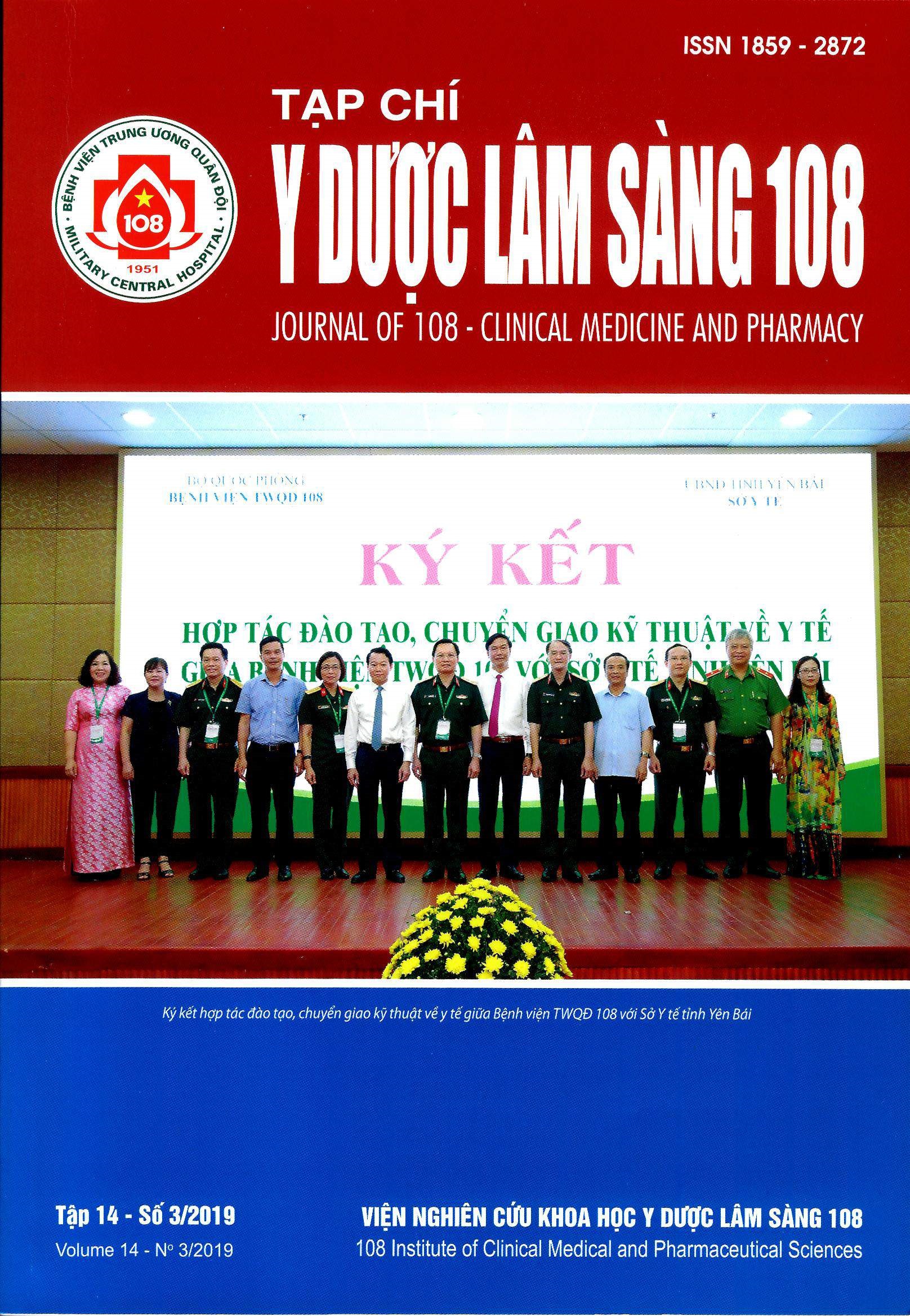The correlation of respiratory resistance and reactance with parameters FEV1%, FEV1/FVC in COPD patients
Main Article Content
Keywords
Abstract
Summary
Objective: To determine the correlation of respiratory resistance and reactance with FEV1%, FEV1/FVC in chronic obstructive pulmonary disease (COPD) patients. Subject and method: The study has been done in 108 Military Central Hospital from October 2017 to November 2018, among 150 stable COPD patients. Al blood tests, ECG, Echography and chest X-ray had done. Respiratory resistance (Rrs5 and Rrs20) and reactance (Xrs5) and Pulmonary Function Tests were measured by MostGraph-02 (Chest M.I., Co. Ltd., Tokyo, Japan) in 150 stable COPD patients. Result: Parameters of Pulmonary Function Tests had been decreased: FVC: 2.81 ± 0.52L, FEV1: 1.85 ± 0.34L, FEV1%: 53.1 ± 22.9%, FEV1/FVC: 52.42 ± 10.65%; FEF 25-75 (%): 22.56 ± 13.82%; PEF: 24.37 ± 14,91. Respiratory resistance Rrs5 and Rrs20 were higher and reactance Xrs5 more negative in COPD patients than in normal people. Rrs5 has moderate inverse correlation with FEV1, FEV1% (r= -0.542 and -0.573) and tight inverse correlation (r = -0.61) with FEV1/FVC. Xrs5 has moderate positive correlation with FEV1, FEV1% and FEV1/FVC (r = 0.492, 0.512. 0.559). Conclusion: Respiratory resistance and reactance has correlation with FEV1, FEV1% and FEV1/FVC.
Keywords: Resistance, reactance, correlation, FEV1%, FEV1/FVC.
Article Details
References
2. Goldman MD (2001) Clinical application of forced oscillation. Pulm Pharmacol Ther 14(5): 341-350.
3. Kurosawa H, Ohishi J, Shimizu Y et al (2010) A new method to assess lung volume dependency of respiratory system resistance using forced oscillation. Am J Respir Crit Care Med 181: 1240.
4. Landser FJ, Cle´ment J, Van de Woestijne KP (1982) Normal values of total respiratory resistance and reactance determined by forced oscillations: Influence of smoking. Chest 81: 586-591.
5. Marko T, Vasileios E, Wim J (2017) Non-linear parameters of specific resistance loops to characterise obstructive airway diseases. Respiratory Reseach 18: 9.
6. Masashi M, Toshihiro S, Kazutaka M et al (2014) Predictors of expiratory flow limitation measured by forced oscillation technique in COPD. BMC Pulmonary Medicine 14(23). doi:10.1186/1471-2466-14-23.
7. Mori K, Shirai T, Mikamo M et al (2011) Colored 3-dimensional analyses of respiratory resistance and reactance in COPD and asthma. COPD 8: 456-463.
8. Ohishi J, Kurosawa H, Ogawa H et al (2011) Application of impulse oscillometry for within-breath analysis in patients with chronic obstructive pulmonary disease: Pilot study. BMJ Open 1(2): 000184.
 ISSN: 1859 - 2872
ISSN: 1859 - 2872
